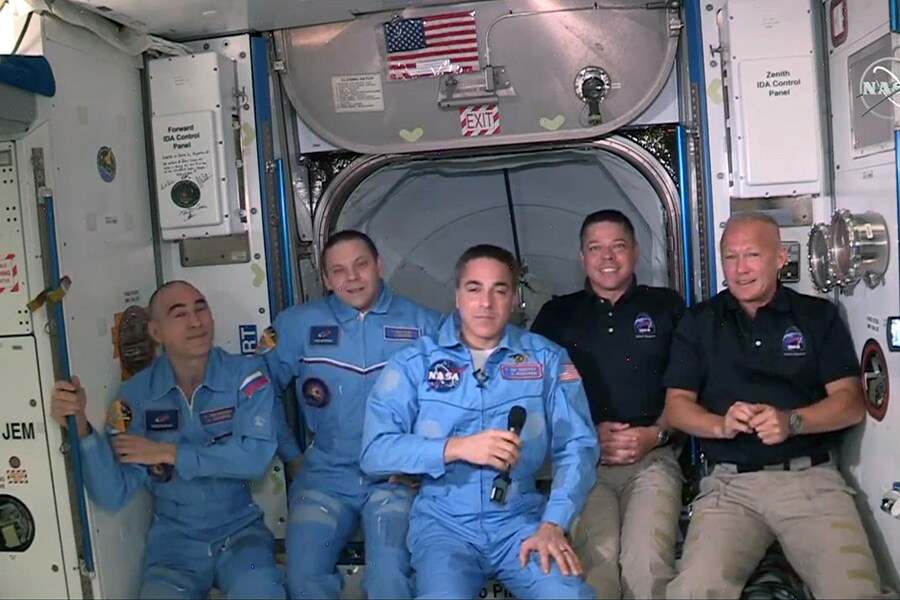
Astronauts Dock with Space Station after historic SpaceX launch
Once astronauts begin using the capsule with regularity, space tourists could also begin to fly it in the years to come; Bob Behnken and Doug Hurley could stay in orbit for months to aid the station's short-staffed crew
 In this screen grab from NASA's feed, NASA astronauts Doug Hurley (R) and Bob Behnken (2R) join NASA astronaut Chris Cassidy (C) and Russian cosmonauts, Anatoly Ivanishin (L) and Ivan Vagner (2L) aboard the International Space Station after successfully docking SpaceX's Dragon capsule May 31, 2020. The docking occurred just 19 hours after a SpaceX Falcon 9 rocket blasted off Saturday afternoon from Kennedy Space Center, the nation’s first astronaut launch to orbit from home soil in nearly a decade. (Photo by NASA via Getty Images)
In this screen grab from NASA's feed, NASA astronauts Doug Hurley (R) and Bob Behnken (2R) join NASA astronaut Chris Cassidy (C) and Russian cosmonauts, Anatoly Ivanishin (L) and Ivan Vagner (2L) aboard the International Space Station after successfully docking SpaceX's Dragon capsule May 31, 2020. The docking occurred just 19 hours after a SpaceX Falcon 9 rocket blasted off Saturday afternoon from Kennedy Space Center, the nation’s first astronaut launch to orbit from home soil in nearly a decade. (Photo by NASA via Getty Images)
The Crew Dragon has arrived.
On Saturday, SpaceX, the rocket company founded by Elon Musk, launched a Falcon 9 rocket with a Crew Dragon capsule carrying two NASA astronauts on top. SpaceX is now the first private business to accomplish a feat — taking people to orbit — that had until now only been done by nations.
Less than a day later, the spacecraft docked at the International Space Station, successfully completing the first leg of its journey.
This Crew Dragon test flight is a shakedown cruise to certify that the spacecraft meets NASA’s needs and safety standards in order to start routine trips taking astronauts to and from the space station. The agency has relied on Russia for that task since the space shuttles were retired in 2011. Once astronauts begin using the capsule with regularity, space tourists could also begin to fly it in the years to come.
At 1:22 p.m. EDT, the two astronauts, Robert Behnken and Douglas Hurley, disembarked the Crew Dragon, exchanging handshakes and hugs with the three astronauts already on the space station.
©2019 New York Times News Service




